Australian Open 2011: Clijsters? Wozniacki? Who Will Win Down Under?
It is redundant to repeat that the women’s field in Melbourne is wide open. This is because the 2010 defending Australian Open Champion Serena Williams is not competing,
The media has already taken a big bite out of the No. 1 seed, Caroline Wozniacki, finding her lacking in seasoning, flavor and a coup d’etat at any major.
Previously, the pundits did the same thing to Jelena Jankovic and Dinara Safina, hounding these ladies, driving them out of range of reaching that ranking again.
Wozniacki, however, is not quite as fragile or as susceptible to harsh, self-centered commentator remarks. Of course, the No. 1 seed wants to capture this title and will do everything in her power to win her first slam.
What everyone seems to overlook is that Wozniacki is 20 years old and her game is still evolving. Just as Nadal starting winning on one surface then improved his game to win on all surfaces over time––Wozniacki has not yet perfected her game.
The No. 1 seed is certainly not the favorite to win. Belgians Kim Clijsters and Justine Henin are.
Most feel Venus Williams has not played enough good tennis in preparation for the Australian Open to win. Maria Sharapova, they feel, is also not in top form and perhaps never will be again.
Many look at Samantha Stosur to break through at home and win her first major. That would, indeed, please the natives.
In order for Wozniacki to win, she would have to play perfect tennis for two weeks, serving well plus out-hustling any player standing across the net. The question is––can Wozniacki do it?
[poll id=”160″]
The Russian Quarter: Vera Zvonareva, The No. 2 Seed
Russian Vera Zvonareva should enjoy smooth sailing in her section of the draw.
By far the weakest of the four quadrants, the No. 2 seed’s quarter may also generate the most surprises.
Zvonareva should be brimming with confidence having made the finals of both Wimbledon and the U.S. Open in 2010––even though she lost both.
The Russian’s first seeded opponent appears in round three––No. 31 Lucie Safarova. The Czech was recently dismissed in the quarterfinals of Brisbane and should present few problems for in-form Zvonareva, fully fit and healthy again.
The interesting match up in this section of Zvonareva’s quarter may come in the third round when No. 16 seed Anastasia Pavlyuchenkova meets fellow Russian No. 18 Maria Kirilenko.
They are two of the rising Russian tennis stars whose futures are yet to be determined but who have been making an impact on the women’s game of late.
One of them could take quite a step forward by winning this third round match. Kirilenko and Pavlychenkova have met twice before, each winning once on hard courts.
It is obvious, however, that the teenager Pavlyuchenkova is just now realizing the extent of her potential.
Zvonareva will face one of these two fellow Russians in the fourth round.
The Russian Quarter: Samantha Stosur, The No. 5 Seed
No. 5 seed Sam Stosur resides in the bottom half of Zvonareva’s quarter loaded with many players looking to upset Australia’s hope for a champion this year.
Stosur must get past Russian Vera Dushevina in the second round and Petra Kvitova the No. 25 seed in the third round, both potential stumbling blocks for the top-ranked Aussie.
Stosur dismissed Kvitova in the second round at the French Open in 2008. This year, however, the Czech took the title in Brisbane.
The Czech Kvitova previously made a name for herself by making the 2010 semifinals of Wimbledon where she gave Serena Williams quite a match for one set, losing 6-7, 2-6.
This match could prove to be a real opportunity for the ever-improving Kvitova.
Also in this section, the No. 10 seed Shahar Peer will have to battle Flavia Pennetta, seeded No. 22, in order to have a chance to meet Stosur in the fourth round.
Peer has won their last two meetings in 2010 defeating the Italian at Indian Wells and the U.S. Open. Prior to 2010, Pennetta had won their three previous matches, all on hard courts.
Expect Stosur to meet Peer in the fourth round and Zvonareva to meet Pavlyuchenkova.
Stosur survives early round upsets, emerging out of in this quarterfinal.
The Belgian Quarter: Kim Clijsters, The No. 3 Seed
Kim Clijsters who recently lost in the finals in Sydney to Na Li before heading to Melbourne, cannot be pleased to see that her opening round match at this year’s Australian Open is with former World No. 1, Dinara Safina.
Safina, who has been struggling for almost a year with recurring back injuries, is also very unhappy to draw Clijsters as her opening round opponent. Such is the luck of the draw.
More than likely, Clijsters will defeat the struggling Russian but no one rises to be No. 1 without a great deal of talent and desire to win.
All tennis aficionados hope the Russian finds her way back to the top of the women’s game.
Also in this section seeking to make her way through the early rounds, Russian Nadia Petrova, seeded No. 13, must make her way past the No. 19 seed Ana Ivanovic in the third round.
Ivanovic has been improving her game steadily also trying to recapture her game and make her way back into the top ten.
Clijsters should find herself facing No. 26 seed Maria Jose Martinez-Sanchez in the third round. Martinez-Sanchez who has better results on clay, has the game to defeat anybody––but it is doubtful she can take out the Belgian.
Expect to see Clijsters through to the fourth round where she will meet Nadia Petrova.
The Belgian Quarter: Jelena Jankovic, The No. 7 Seed
The opposition in the quarterfinals for Kim Clijsters could come from the No. 7 seed Jelena Jankovic.
The No. 7 seed, another former World No. 1, continues to struggle to regain the dominance she once enjoyed on the tennis courts.
At least, Jankovic finds herself consistently ranked in the top ten, giving her a better chance to find success.
At the Australian Open, the Serb, however, must get by No. 27 seed Alexandra Dulgheru who had a break out year in 2010.
Jankovic and Dulgheru would meet in the third round.
Also in this section of the draw, the No. 12 seed, Agnieszka Radwanska faces Kimiko Date-Krumm in her opening round match.
Should Radwanska survive that match and advance to the third round the Pole might meet the No. 24 seed Russian Alisa Kleybanova.
After winning in Kuala Lumpur, Seoul and reaching the finals in Bali, losing to a resurgent Ana Ivanovic, Kleybanova should be a real challenge to Radwanska.
There exists a real opportunity for a lower-ranked seed or unseeded player to come out of this section of the Clijsters quarter.
Fully expect Kim Clijsters, however, to emerge a winner from her quarter of the draw.
The U.S. Quarter: Venus Williams, The No. 4 Seed
Venus Williams will meet No. 43 ranked Sara Errani, the little Italian, in the first round.
Errani and Williams have never met before on tour. The chances are the Italian will pose few problems for Williams if the elder sister has been able to put aside her injuries, finding herself fit enough to sustain the early round rigors.
If Williams can hang on long enough, she may be able to play herself into form.
The first ranked player Williams could meet would be the No. 30 seed Andrea Petkovic.
The German reached the finals in Netherlands ‘S-Hertogenbosch where she lost to Justine Henin and the fourth round of the U.S. Open where Petkovic lost to Vera Zvonareva.
The No. 30 seed could prove to be a real test for Williams.
Sitting also in Williams section of the quarter another former World No. 1 and Australian Open champion, No. 14 seed Maria Sharapova.
If the seedings hold, Williams would meet Sharapova in the fourth round.
But first Sharapova has a hurdle or two of her own to bounce over.
The Russian beauty must get past Kaia Kanepi, the No. 20 seed in the third round, should both players advance that far.
No doubt about it, Kanepi has all the weapons to bring down a shaky Sharapova.
The U.S. Quarter: Victoria Azarenka, The No. 8 Seed
The bottom of the Williams quarter presents some intriguing match ups. It is, perhaps, the most difficult and most compelling section of the women’s draw
The No. 9 seed Na Li of China could meet French woman Aravane Rezai in the fourth round assuming both players make it through three tough rounds.
Na Li has won both times she met Rezai on grass in Birmingham in 2009 and 2010.
The lady from China also recently defeated Kim Clijsters in the final of the Medibank International Tournament in Sydney, giving Na Li a real boost coming into Melbourne. Li is a dangerous opponent on the hard courts.
It looks very likely that the No. 8 seed Victoria Azarenka will meet Na Li in the fourth round.
But first Azarenka will have to get by the No. 28 seed Daniela Hantuchova of Slovakia in the third round.
That will not be easy. The two have met once on hard courts in San Diego with Hantuchova winning in three sets during the second round.
The last three times Azarenka participated in the Australian Open, she has been sent home by Serena Williams. In 2008, Williams defeated Azarenka in the third round, in 2009 in was the fourth round and in 2010, Azarenka made it to the quarterfinals.
This year, maybe, Azarenka will go all the way without Serena Williams blocking her path.
Although Na Li has recent victories, look for Azarenka to make it past the quarterfinals in 2011.
The Danish Quarter: Caroline Wozniacki, The No. 1 Seed
This quarter is loaded, to put it mildly.
Wozniacki’s first opponent could be a real test for the Dane, although she has not played Gisela Dulko since 2008.
The two met three times that year with Wozniacki winning their two hard-court matches at the Australian Open and the Japan Open in Tokyo. Dulko won on clay in Berlin.
So far in 2011, Wozniacki has lost two exhibition matches to Kim Clijsters and Vera Zvonareva earlier this year––which is forgivable.
But then the Dane lost to No. 32 ranked Dominika Cibulkova in the second round at Sydney as the No. 1 seed.
Still Wozniacki says she remains confident as she heads into Melbourne. But you have to wonder coming into the Australian Open seeded No. 1 without Serena Williams in the draw––if the pressure is not getting to the 20-year old.
No doubt, Wozniacki will take care of Dulko, although the Argentine likes to take down top seeds. Dulko can be a handful when she is playing her best.
Should the Dane survive, awaiting her in the third round could be the same Slovakian Cibulkova who defeated her in Sydney.
In the fourth round the Dane might find herself facing the No. 15 seed Marion Bartoli or the No. 21 seed Yanina Wickmayer also very capable of upsetting the Dane.
The real issue for the No. 1 seed is later down the road when Wozniacki meets her potential quarterfinal opponent––one of the many talented players advancing through the bottom of Wozniacki’s quarter.
The Danish Quarter: Francesca Schiavone, The No. 6 Seed
The No. 11 seed Justine Henin as well as the No. 6 seed Francesca Schiavone will be battling it out to get to the quarterfinals.
Schiavone, of course, is the 2010 French Open champion. The Italian has enjoyed a real resurgence since her break through in Paris.
Henin, who has been injured much of 2010 after her fall at 2010 Wimbledon, is hoping for a repeat of last year’s Australian Open when the Belgian made the finals where she lost to eventual champion, Serena Williams.
Henin, moreover, could meet former French and U.S. Open champion, No. 23 seed Svetlana Kuznetsova in the third round.
The Russian is trying to work her way back into the women’s top ten after suffering from poorer than normal results for the past year.
Schiavone, on the other hand, might meet the No. 32 seed Tsvetana Pironkova from Bulgaria in the third round.
The two have met three times in the past and Schiavone leads their head to head 3-0, winning once on grass in 2006 and twice on hard courts in 2007 and 2009.
The tall Pironkova, however, was impressive defeating Venus Williams in the quarterfinals of Wimbledon in 2010, making it to the semifinals where she lost to Vera Zvonareva.
The Bulgarian has definitely improved her ranking and her game. She will not be the same player Schiavone met in 2009.
You have to like Henin making it through to meet Wozniacki in the quarterfinals with Henin emerging as the quarterfinal winner.
2011 Ladies Australian Open Semfinals and Finals
While this might be an excellent chance for Wozniacki to win her first slam trophy, it also offers the best opportunity for several other players seeking to win this Australian Open Championship.
More players seem to handle hard courts better than clay or grass surfaces.
Wozniacki has worked very hard to reach the rank of the No. 1 player of the world, improving her overall game, serve and court coverage.
In 2008 Wozniacki made to fourth round of the Australian Open losing to Ana Ivanovic 6-1, 7-6. In 2009 the Dane lost to Jelena Dokic 3-6, 6-1, 6-2. Last year, in 2010, Wozniacki made it again to the fourth round where she lost to Na Li of China 6-4, 6-3.
It would be wonderful, but this will not be her year.
Australian Open Semifinals:
Clijsters vs. Stosur
Azarenka vs. Henin
Finals:
Stosur vs. Henin
Winner:
Samantha Stosur
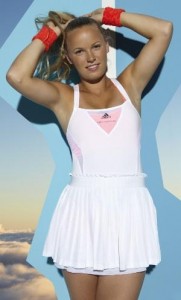
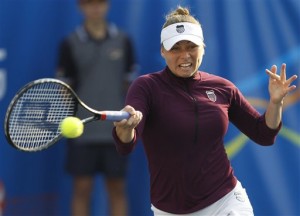
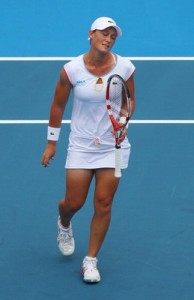
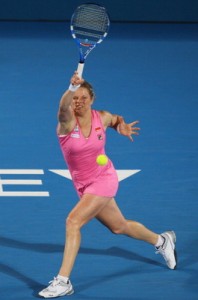
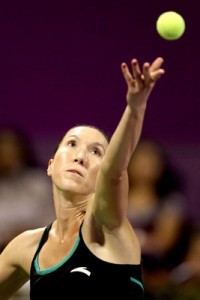
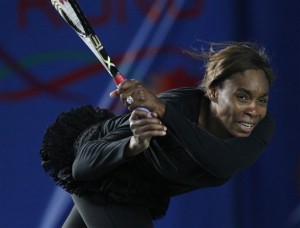
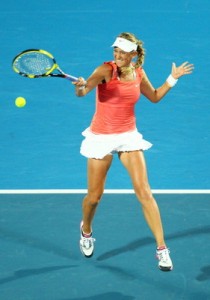
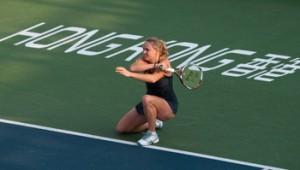
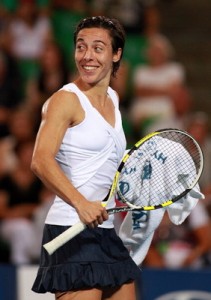
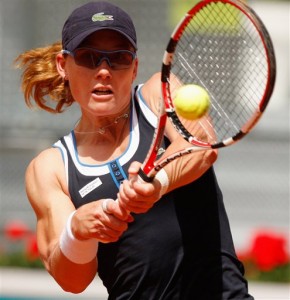
http://www.beautifulislam.net/prophethoo…
Jesus (p) in Hadith and Muslim Traditions
[Webmaster Note: The following is taken from Jesus, A Prophet of Islam by Muhammad ‘Ata ur-Rahim, available for $7.75 at http://www.halalco.com (scroll down for the title). You can also receive a FREE copy of the book (God-willing) by faxing the Saudi Embassy at (202) 944-5983: include your name, mailing address and phone number with your request for "Jesus, A Prophet of Islam". –
As well as the Hadith which refer to Jesus (peace be upon him), there are also many Muslim traditions which give accounts of the sayings and deeds of Jesus (pbuh). These were originally gathered together by the earlier followers of Jesus, especially those who spread to Arabia and North Africa. When the Prophet Muhammad (pbuh) came, many of the followers of these followers embraced Islam. They retained all the accounts they had about Jesus (pbuh) who had foretold the coming of the Prophet Muhammad (pbuh). These traditions were passed down from generation to generation by the Muslims, and many of them were finally gethered together in Tha’labi’s Stories of the Prophets and in al-Ghazzali’s Revival of the Life-Transaction Sciences. It is significant to see how these traditions give a clear and unanimous picture of the ascetic Prophet who prepared the way for the final Messenger:
Ka’b al-Akhbar said: Jesus, son of Mary, was a ruddy man, inclined to white; he did not have long hair and he never annointed his head. Jesus used to walk barefoot, and he took no house or adornment, or goods, or clothes, or provision except his day’s food. Wherever the sun set, he arranged his feet in prayer till the morning came. He was curing the blind from birth and the leper and raising the dead by Allah’s permission and was telling his people what they were eating in their houses and what they were storing up for the morrow, and he was walking on the surface of the water in the sea. His head was dishevelled and his face was small; he was an ascetic in the world, longing for the next world and eager for the worship of Allah. He was a pilgrim in the earth till the Jews sought him and desired to kill him. Then Allah raised him up to heaven; and Allah knows best.
********************
Malik, son of Dinar, said: Jesus (pbuh) and the disciples with him passed by the carcass of a dog. A disciple said, "What a stench this dog makes!" The he (pbuh) said, "How white are its teeth!"
********************
It is related on the authority of Ma’ruf al Karkhi that Jesus (pbuh) said, "Remember cotton when it is put over your eyes."
********************
In a tradition (it is said) that Jesus (pbuh), son of Mary, met a man and said to him, "What are you doing?" He replied, "I am devoting myself to God." He said, "Who is giving you what you need?" He said, "My brother." (Jesus) said, "He is more devoted to Allah than you."
********************
Jesus (pbuh), son of Mary, said: "The world consists of three days: yesterday which has passed, from which you have nothing in your hand; tomorrow of which you do not know whether you will reach it or not; and today in which you are, so avail yourself of it."
********************
The disciples said to Jesus (pbuh), "How is it that you can walk on water and we cannot?" Then he said to them, "What do you think of the dinar and the dirham?" (pieces of money). They replied, "They are good." He said, "But they and mud are alike to me."
********************
When Jesus (pbuh) was asked, "How are you this morning?", he would answer, "Unable to forestall what I hope, or to put off what I fear, bound by my works, with all my good in another’s hand. There is no poor man poorer than I."
********************
And he said also, "The world is both seeking and sought. He who seeks the next world, this world seeks him until his provision in it is complete; and he who seeks the present world, the next world seeks him until death comes and seizes him by the neck."
********************
If you wish, you may follow him who was the Spirit and the Word, Jesus (pbuh), son of Mary, for he used to say, "My seasoning is hunger, my undergarment is fear of Allah, my outer-garment is wool, my fire in winter is the rays of the sun, my lamp is the moon, my riding beast is my feet, and my food and fruit are what the earth brings forth (i.e. without cultivation). At night I have nothing and in the morning I have nothing, yet there is no one on earth richer than I."
********************
Jesus (pbuh) said, "He who seeks after the world is like one who drinks sea water; the more he drinks, the more his thirst increases, until it kills him."
********************
It is related that the Messiah (pbuh) passed in his wandering a man asleep wrapped up in his cloak; then he wakened him and said, "O sleeper, arise and glorify Allah! Exalted is He!" Then the man said, "What do you want from me? Truly I have abandoned the world to its people." So he said to him, "Sleep then, my friend."
********************
‘Ubaid, son of ‘Umar, said that the Messiah (pbuh), son of Mary, used to wear hair clothing, and eat wild fruits, and he had no son to die, and no house to be demolished, and he stored up nothing for the morrow. He slept wherever the evening overtook him.
********************
Jesus, the Messiah, (pbuh) used to take nothing with him but a comb and a jug. The he saw a man combing his beard with his fingers, so he threw away the comb; and he saw another man drinking from a river with the palms of his hands, so he threw away the jug.
********************
Jesus (pbuh) said to the disciples, "Take the places of worship as houses and the houses as lighting-places; and eat wild vegetables and drink pure water, and escape safe from the world."
********************
Jesus (pbuh), son of Mary, said, "In the last days there will be learned men who teach abstinence in the world but will not be abstinent themselves, who will teach men to take delight in the next world but will not take delight in it themselves, and who will warn men against coming before rulers but will not refrain themselves. They will draw near to the rich and keep far from the poor; they will be pleasant to great men but will shrink from humble men. Those are the brethren of the devils and the enemies of the Merciful."
********************
The following is related on the authority of Janir, on the authority of Laith. A man accompanied Jesus (pbuh), son of Mary, and said, "I will be with you and will accompany you." So they set off and came to the bank of a river and sat down to breakfast; and they had three loaves. They ate two loaves, and a third loaf was left over. Then Jesus (pbuh) rose up and went to the river and drank, after which he returned, but did not find the loaf; so he said to the man, "Who took the loaf" He replied, "I do not know." Then he set off with his companion and saw a gazelle with two of her young. The narrator says, he called one of them and it came to him; then he cut its throat and roasted part of it, and he and that man ate. Then he said to the young gazelle, "Rise, by the permission of Allah." When it rose and went away, he said to the man, "I ask you by Him Who has shown you this sign, who took the loaf?" He replied, "I do not know." Afterwards they came to a wadi with water in it and Jesus (pbuh) took the man’s hand and they walked on the water. Then, when they had crossed, he said to him, "I ask you by Him Who has shown you this sign, who took the loaf?" He replied, "I do not know." Then they came to a desert and sat down, and Jesus (pbuh) began to collect earth and a heap of sand, after which he said, "Become gold, and he divided it into three parts and said, "A third is for me, a third for you, and a third for him who took the loaf." Then he said, "I am the one who took the loaf." He said, "It is all yours." Jesus (pbuh) then left him and two men came to him in the desert while he had the wealth with him and wished to take it from him and kill him. He said, "It is among us in thirds; so send one of you to the village to buy food for us to eat." The narrator said: They sent one of them, and he who was sent said to himself, "Why should I devide this wealth with these men? I shall put poison in this food and kill them and take the wealth myself." So he did so. And these two men said, "Why should we give this man a third of the wealth? When he returns we shall kill him, and devide the wealth between us." The narrator said: So when he returned they killed him and ate the food and died; and that wealth remained in the desert with those three men lying dead beside it. Then Jesus (pbuh) passed them in that condition and said to his companions, "This is the world, so beware of it."
********************
It is related that Jesus (pbuh) passed three people whose bodies were wasted and who were pale and said, "What has brought on you that which I see?" They replied, "Fear of the Fire." He said, "It is Allah’s duty to render secure him who fears." Afterwards he passed from them and came to another three, and lo! they were in greater emanciation and paleness, so he said, "What has brought on you that which I see?" They replied, "Desire for the Garden." He said, "It is Allah’s duty to give you what you hope for." After that he passed from them and came to another three, and lo! they were in still greater emanciation and paleness as though mirrors of light were over their faces, so he said, "What has brought on you that which I see?" The replied, "We love Allah, Great and Glorious is He." He said, "You are those who are nearest to Allah; you are those who are nearest to Allah; you are those who are nearest to Allah."
********************
It is related on the authority of Muhammad, son of Abu Musa, concerning Jesus (pbuh), son of Mary, that he passed an afflicted man and treated him kindly and said, "Oh Allah, I beseech You to heal him." Then Allah, Exalted is He, revealed to him, "How can I heal him from that which I am healing him?"
********************
It is related that Jesus (pbuh) one day passed a hill in which he saw a cell. He drew near it and found in it a devotee whose back was bent, whose body was wasted, and in whom austerity had reached its utmost limits. Jesus saluted him and wondered at his evidences (of devotion) which he saw. So Jesus said to him, "How long have you been in this place?" He replied, "For seventy years I have been asking Him for one thing which He has not granted me yet. Perhaps you, O Spirit of Allah, may intercede for me concerning it; then possibly it may be granted." Jesus said, "What is your requirement?" He replied, "I asked Him to let me taste the amount of an atom of His pure love." Jesus said to him, "I shall pray to Allah for you about that." So he prayed for him that night, and Allah, Exalted is He, revealed to him, "I have accepted your intercession and granted your request." Jesus (pbuh) returned to him to the place after some days to see what the condition of the devotee was, and saw the cell had fallen down and a great fissure had appeared in the ground below it. Jesus (pbuh) went down into that fissure and went some leagues in it and saw the devotee in a cave under that hill standing with his eyes staring and his mouth open. Then Jesus saluted him but he did not give him an answer. While Jesus (pbuh) was wondering at his condition someone shouted to him, "O Jesus, he has asked Us for something like an atom of Our pure love, and We knew that he was not able for that, so We gave him a seventieth part of an atom, and he is bewildered in it thus; so what would it have been like if We had given him more than that?"
********************
Abdullah bin Umar reported Allah’s Messenger (pbuh) as saying, "Last night I found myself in a vision at the Ka’ba and saw a ruddy man like the most good-looking of that type that you can see with the most beautiful lock of hair you can see. He had combed it out, and it was dripping with water. He was leaning on the shoulders of two men and going round the House. When I asked who he was, I was told that he was the Messiah, son of Mary…" [Bukhari, Muslim –
********************
Abu Huraira reported Allah’s Messenger (pbuh) as saying, "By Him in whose hand my soul is, the son of Mary will soon descend among you as a just judge. He will break crosses, kill swine and abolish the jizya (a tax payable by a community which accepts the protection of a Muslim ruler but whose members do not embrace Islam), and wealth will pour forth to such an extent that no one will accept it, and one sajda (the position in a Muslim’s prayer where the forehead is placed on the ground), will be better than the world and what it contains." Abu Huraira used to say: Recite if you wish, "Not one of the people of the Book will fait to believe in him before his death…" (Qur’an 4.159) [Bukhari, Muslim –
********************
Abdullah bin Amr reported Sayyidina Muhammad (pbuh) as saying, "Jesus, son of Mary, will descend to the earth, will marry, have children, and remain forty-five years, after which he will die and be buried along with me in my grave. Then Jesus, son of Mary, and I shall arise from one grave between Abu Bakr and Umar." [Ibn al-Jauzi transmitted it in the Kitab al-Wafa’ –
********************
Abu Huraira reported Allah’s Messenger (pbuh) as saying, "I am the nearest of kin to Jesus, son of Mary, in this world and the next. The prophets are brothers, sons of one father by co-wives. Their mothers are different, but their religion is one. There has been no prophet between us." [Bukhari, Muslim –
In this famous statement, the last of the Prophets and Messengers, our Master Muhammad (pbuh), summed up the whole matter:
The prophets are brothers: they are all the same, there is no distinction between them.
Sond of one father: they all declare one doctrine — La ilaha il’Allah. There is no god but Allah, the One. Nothing can be associated with Him in His Divinity.
Their mothers are different: each Prophet has been sent to a particular people at a particular time. The Prophet of the time has had revealed to him a Sunna, or life-form, a practice, a social pattern by which his community should live. When a new Prophet came to a people, he brought a new form of this Sunna to accord with the new age. This is the Shari’a or Road of the Prophets. Thus, with the coming of Sayyidina Muhammad (pbuh), the Divine Transaction is complete. Messengership is sealed in the last revealed Book, the Glorious Qur’an.
Prophethood is sealed with the Shari’a and the Sunna of the compassionate Prophet Muhammad, peace and blessings of Allah be upon him.
hello!,I really like your writing so much! proportion we be in contact extra about your post on AOL? I require an expert on this house to unravel my problem. Maybe that’s you! Looking forward to see you.
Your posting documents have seen ,so nice
opencart ecommerce web development Saudi
Opencart Developer we provides
sports information very importent so tanks for posting. and read more news: opencart Development